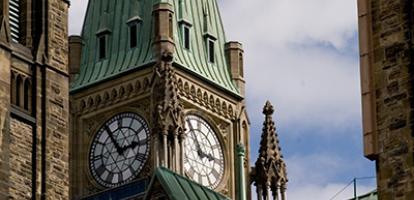On the calendar, 2021 is all but over. Yet come midnight Friday, the year will still feel unfinished. Notwithstanding vaccines and better knowledge about avoiding and treating COVID, the virus’ resurgence threatens more damaging lockdowns. A federal election billed as the most important since 1945 settled nothing. 2021’s economic numbers featured frothy consumption, housing and government spending, but far too little of the capital investment needed for sustained prosperity in 2022 and beyond.
The federal government’s economic policies provide stark examples of formal closure to the year but too much important work deferred. Several items — the inflation framework, the finance minister’s fall update, the release of the public accounts — did get done ahead of year-end, barely. But those nominal completions contrast sharply with the heavy lifting that has been left to the future.
The two-per cent inflation target’s renewal just ahead of the end-of-year deadline seemed like an accomplishment only because the delay very likely stemmed from pressure to raise or otherwise compromise the target – bullets we ended up dodging. The Bank will now still target two per cent, which is good. But with the last two CPI readings showing prices up almost five percent year-over-year, getting back to target means tighter monetary policy. That’s hard work still to do.
The federal government’s fall fiscal update was also delivered barely on time, with just a week left in autumn. After failing to produce a budget for the 2020/21 fiscal year and producing the 2021/22 budget only after the fiscal year had already started, simply getting a fall update in the fall was something. But not an occasion for celebration.
This down-to-the-wire timing on the update seems related to a delay in releasing the public accounts for 2020/21 — a fiscal year that ended last March, nearly nine months ago. And that delay reportedly occurred because the government reopened the books after the Auditor General had already signed off in September. The reason? To record an extra $10 billion in 2020/21 spending, where it would attract little notice, rather than showing it in the current fiscal year. The books now are finally closed — but late, and not for a good reason.
Moreover, those books contain a flawed presentation of the federal government’s expenses. The government has started showing much of the cost of its employee pensions as a below-the-line adjustment to the deficit, rather than in program spending, where it belongs. Instead of one figure for consolidated expense, the government now has two: one of them an “actuarial loss” entry that many readers of budgets and financial statements will ignore. They should not: it is there partly because the federal government understated past pension costs as they accrued. This line belatedly adds a more meaningful estimate of their value to Ottawa’s debt. Cleaning up the books to show a more complete picture of federal spending and debt is another unfinished task.
The hardest task Ottawa has deferred to the future is getting spending and borrowing under control. Most of the $40-billion windfall from favourable conditions cited in the fall update will be absorbed by new spending. So a deficit of more than $145 billion will push the ratio of federal debt to GDP up further. The update does show smaller deficits and a declining debt ratio afterwards; but reassuring future numbers are routine in federal projections. Actually achieving them will take work — not the tens of billions more in spending and borrowing that election promises prefigure for next spring’s federal budget.
Those examples from federal macroeconomic policy are not the worst. It is easy — too easy — to rhyme off examples of federal commitments announced and re-announced with negligible progress in 2021. Drinking water on reserves, tree planting, energy transition, greenhouse-gas abatement, innovation — we’ve had a year of more talk. But the real work? Later.
A good resolution for 2022 would be a tidier close to the year. We have a new inflation framework. Now we need lower inflation. The federal government should produce its 2022 budget before the fiscal year begins. It should also release financial statements that are more timely and less opaque. And its fiscal policies should feature less spending on consumption and more measures that will motivate people with talent to work and businesses with capital to invest.
The federal government’s rush to deadlines in 2021 has left too much unfinished. 2022 needs less talk and more work. In a year’s time, we want more accomplishments to celebrate.
William Robson is the CEO of the C.D. Howe Institute.





